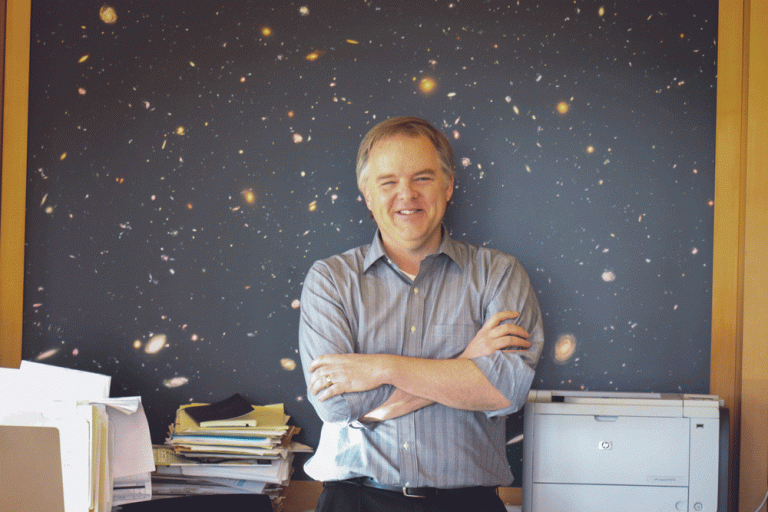
Jack Shea
Lars Bildsten, a University of California, Santa Barbara professor in theoretical physics, received the 2017 Dannie Heineman Prize for Astrophysics last month. Answering questions on the subject, it is clear that Bildsten stands out, maintaining a friendly demeanor when explaining his groundbreaking work.
The astronomy of the universe has fascinated Bildsten since he was in grade school. While he was gaining advanced university degrees, he was constantly amazed by how “you can make a living this way.”
Bildsten started undergraduate studies in aeronautical engineering but “basically studied physics the whole time.” While working on his Ph.D. at Cornell, Bildsten “rediscovered astrophysics” and his academic career skyrocketed.
“My research is focused on theoretical work noted by observations of oscillations and stellar explosions,” said Bildsten.
Bildsten details in his research that eventually led to major recognition, including the Heineman Prize, with verbal simplicity. The process involves making sense of data taken from satellites to measure the brightness of stars and film the oscillations. He works with “hundreds of oscillations in the same star, allow[ing] you to measure more properties of what’s going on deep within the star.”
The data helps Bildsten and his assistants determine whether or not the stars have magnetic fields. This information leads to a better understanding of the stars, but it’s not always the whole picture. He explained that theorists are always working to make sense of this data as though it’s a “puzzle,” piecing together the mysteries of astronomy.
For example, Bildsten observes the effect of helium masses on thermonuclear supernovae. Measuring the ejected material from these binary reactions, Bildsten can study supernovae that aren’t normally bright enough to be observed. This development creates incentives across research institutions to further expand the information into the understanding of dark energy.
Understanding these reactions gives researchers a better understanding of the processes and effects of supernovaes. Such research provides provocative content not only for researchers in Bildsten’s field, but for all levels of education. In contemporary society, such research classifies as “basic research,” used to illustrate academic works at and below university level.
When asked about current limitations on the scientific community coming from the new administration in Congress, Bildsten expressed confidence for astrophysics’ sovereignty, stating, “There is broad support for basic research within Congress.”
“We have to wait and see who handles the National Science Foundation,” he said. “Its construct is one that’s relatively independent of an administration on a short term basis. Long term, it obviously can change.”
Only a few lucky undergraduate students get the chance to be on a research team with Bildsten. They are mainly third or fourth year students determined to be in his field. Bildsten encourages students to pursue what they’re passionate about and to strive for excellence in their studies and work.
















